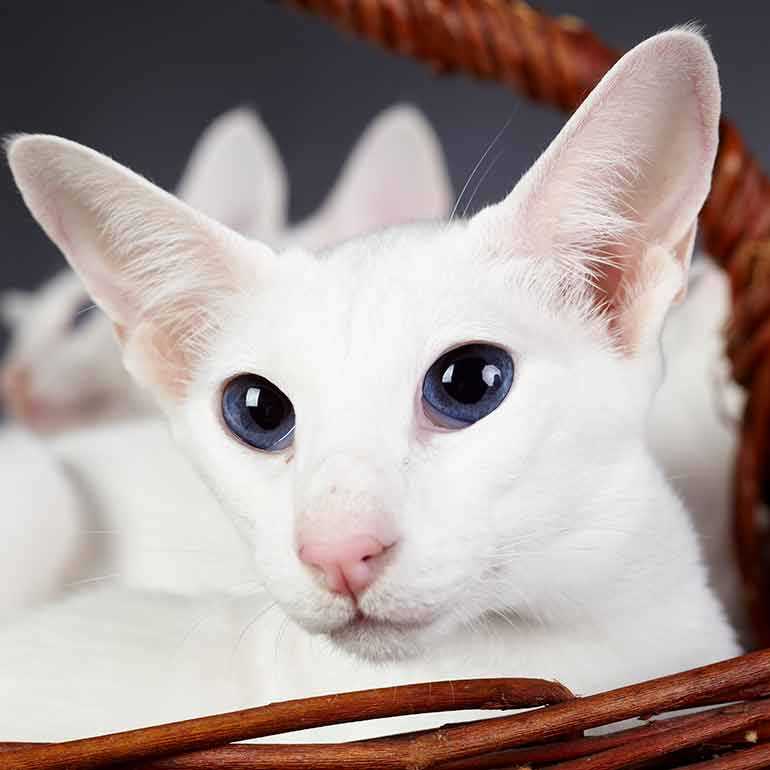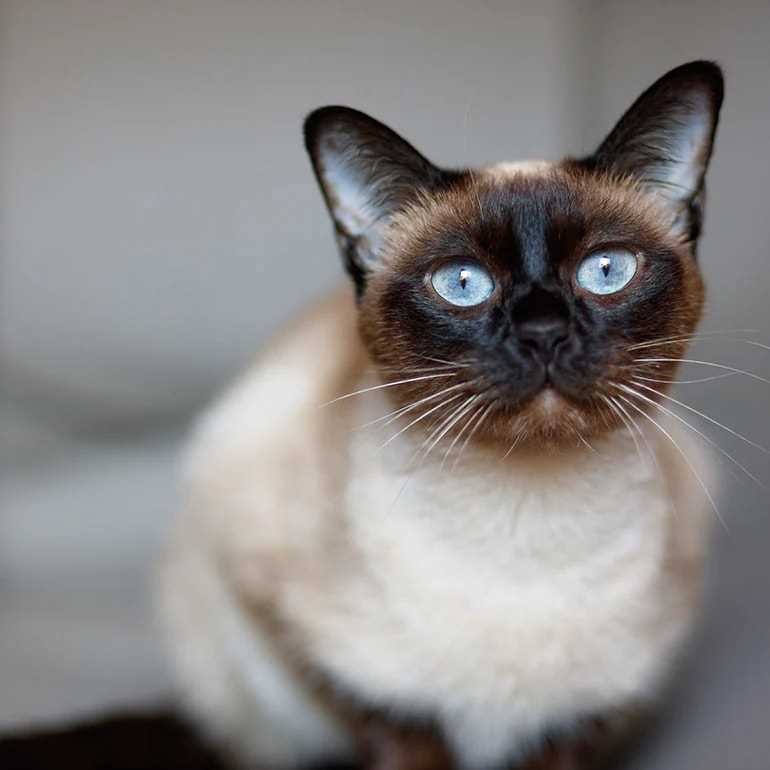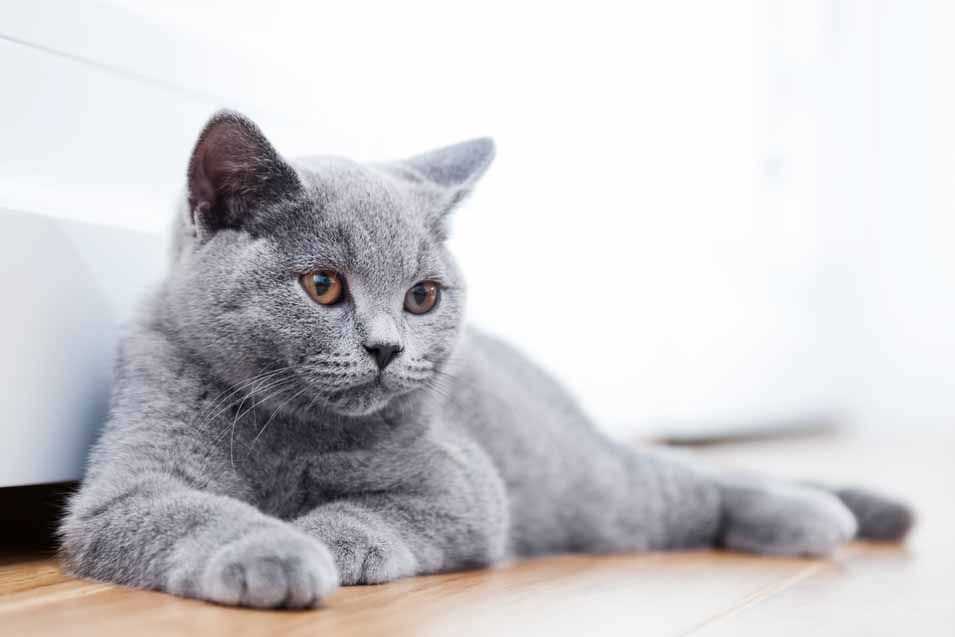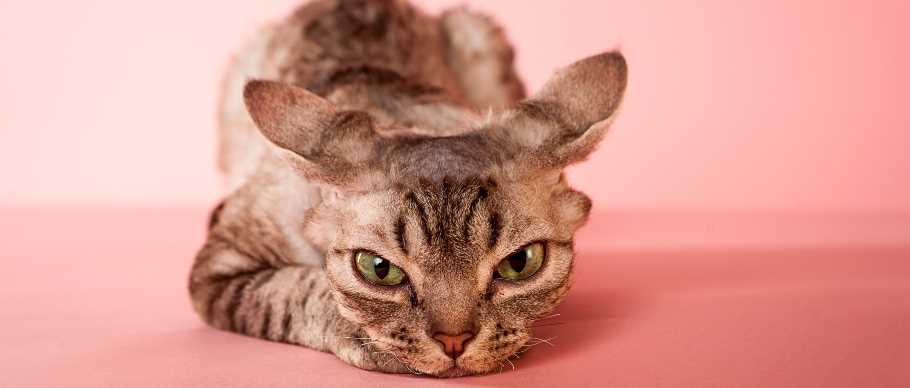



For those of you seeking companions with minimal fur loss, consider adopting a Sphynx. This breed is well-known for its lack of a traditional coat, making it an excellent choice for allergy sufferers and those who prefer a cleaner home environment.
Another great option is the Devon Rex. With its short, curly fur, this playful breed sheds significantly less than most. Regular grooming helps manage any loose hair, keeping your space tidy and fresh.
If you’re looking for a hybrid, the Bengal cat might catch your interest. While they have a luxurious coat, their unique fur structure results in less fur scattering around the house. Their playful nature and striking appearance make them a delightful addition to any family.
Finally, the Russian Blue is not only stunning with its silvery-blue fur but also has a reputation for shedding less than other breeds. This elegant feline is perfect for those wanting a stylish, low-maintenance pet.
Recommendations for Low-Shedding Felines
For those seeking companions with minimal hair loss, consider the Sphynx. This breed is hairless, requiring specific grooming but eliminating fur issues altogether.
Another option is the Devon Rex. With its short, wavy coat, it sheds less compared to traditional breeds, making it a great choice for allergy sufferers.
Also, the Cornish Rex boasts a similar low-maintenance coat. Its unique fur structure means less shedding while still providing that cuddly feel.
For a more traditional appearance, the Burmese breed has a short, fine coat that requires little upkeep and results in minimal fur around the house.
Lastly, the Russian Blue has a dense double coat that traps loose hair, reducing what ends up on your clothes or furniture.
Hypoallergenic Cat Breeds You Should Consider
If you’re searching for feline companions known for producing fewer allergens, here are some exceptional breeds to think about:
Siberian
This fluffy breed may surprise you with its low allergenic properties. Despite their long fur, Siberians have a unique coat that requires less grooming, leading to reduced dander accumulation.
Balinese
Known as the “long-haired Siamese,” Balinese have a silkier coat that produces less Fel d 1 protein, a common allergen. Their playful and affectionate nature makes them great companions.
Bengal
Bengals are not just stunning with their wild appearance; they also have a unique coat that requires less maintenance. This results in lower allergen levels in the home.
Oriental Shorthair

<pWith their short, fine hair, Oriental Shorthairs are another breed that tends to produce fewer allergens. Their vibrant personalities and intelligence make them a joy to have around.
Russian Blue

<pThis breed is not only beautiful but also produces less of the allergenic protein. Their stunning blue-grey coat and green eyes make them a striking presence in any home.
- Consider your living environment and lifestyle when choosing a breed.
- Spend time with potential new friends to see how your allergies react.
- Regular cleaning can help manage allergens effectively.
Choosing a feline buddy from these breeds might just lead to a harmonious home for allergy sufferers!
Understanding Grooming Needs to Minimize Fur Loss
Regular brushing is key. Aim for at least twice a week, using a slicker brush for fine undercoats and a bristle brush for top layers. This helps remove loose hairs before they scatter around the house.
Bathing is another helpful practice, though it should be done sparingly. Once every few months can help maintain coat health and reduce dander. Make sure to use cat-specific shampoos that are gentle on the skin.
Diet plays a significant role too. High-quality food rich in omega fatty acids promotes healthy skin and fur, which can minimize the amount of loose hair. Look for brands that list meat as the first ingredient.
Hydration is critical. Ensure fresh water is always available, as dehydration can lead to dry skin and increased fur loss. Consider a water fountain; many felines prefer running water.
Regular vet check-ups are essential for monitoring skin conditions or allergies that may contribute to excessive fur loss. Early intervention can make a noticeable difference.
Lastly, create a stress-free environment. High levels of anxiety can lead to increased grooming and shedding. Provide cozy hiding spots and interactive toys to keep your furry friend relaxed and engaged.
Environmental Factors That Affect Feline Shedding

Temperature plays a significant role in fur loss. I notice that during warmer months, my coat tends to thin out as my body adjusts to the heat. Keeping the indoor climate comfortable can help regulate shedding. Aim for a consistent temperature to reduce excessive fur flying around.
Humidity Levels
Humidity is another factor that influences how much fur I lose. In dry environments, my skin can become flaky, leading to increased shedding. Using a humidifier helps maintain moisture in the air, promoting healthier skin and reducing fur loss.
Diet and Nutrition
What I eat directly impacts my fur health. A balanced diet rich in omega fatty acids strengthens my coat and minimizes shedding. High-quality food with essential nutrients supports healthy skin and fur. Regular vet check-ups can help ensure my nutritional needs are met, contributing to less fur around the house.
Stress is also a major contributor to fur loss. Changes in my environment or routine can cause anxiety, leading to increased shedding. Creating a stable and calm atmosphere aids in reducing stress, which in turn helps keep my coat intact.
How to Care for Felines with Low Shedding Traits
To maintain a healthy and happy life for your low-shedding friend, prioritize regular grooming. Use a fine-toothed comb or a slicker brush to remove any loose hair and prevent matting. Aim for at least once a week, adjusting frequency based on their specific coat type.
Nutrition for Optimal Coat Health
Feeding them a balanced diet rich in omega fatty acids supports skin and fur condition. Look for high-quality cat food that lists meat as the first ingredient. If you’re curious about feeding options, check out this guide on can cats eat dry food with no teeth. Fresh water must always be accessible, as hydration plays a key role in maintaining a healthy coat.
Creating a Comfortable Environment

Maintain a clean living space by vacuuming regularly to reduce allergens. Consider using air purifiers to minimize dander in the home. Also, keep their bedding clean and rotated to avoid any buildup of hair. For food storage, learn how to keep dry cat food fresh to ensure they always have access to nutritious meals.
| Caring Aspect | Recommendation |
|---|---|
| Grooming | Weekly combing with a slicker brush |
| Diet | High-quality food with omega fatty acids |
| Hydration | Fresh water available at all times |
| Cleaning | Regular vacuuming and bedding maintenance |
By following these specific care tips, you can ensure your low-shedding companion remains healthy and content. Your attention to their needs will reflect in their happiness and well-being.
For those of you seeking companions with minimal fur loss, consider adopting a Sphynx. This breed is well-known for its lack of a traditional coat, making it an excellent choice for allergy sufferers and those who prefer a cleaner home environment.
Another great option is the Devon Rex. With its short, curly fur, this playful breed sheds significantly less than most. Regular grooming helps manage any loose hair, keeping your space tidy and fresh.
If you’re looking for a hybrid, the Bengal cat might catch your interest. While they have a luxurious coat, their unique fur structure results in less fur scattering around the house. Their playful nature and striking appearance make them a delightful addition to any family.
Finally, the Russian Blue is not only stunning with its silvery-blue fur but also has a reputation for shedding less than other breeds. This elegant feline is perfect for those wanting a stylish, low-maintenance pet.
Recommendations for Low-Shedding Felines
For those seeking companions with minimal hair loss, consider the Sphynx. This breed is hairless, requiring specific grooming but eliminating fur issues altogether.
Another option is the Devon Rex. With its short, wavy coat, it sheds less compared to traditional breeds, making it a great choice for allergy sufferers.
Also, the Cornish Rex boasts a similar low-maintenance coat. Its unique fur structure means less shedding while still providing that cuddly feel.
For a more traditional appearance, the Burmese breed has a short, fine coat that requires little upkeep and results in minimal fur around the house.
Lastly, the Russian Blue has a dense double coat that traps loose hair, reducing what ends up on your clothes or furniture.
Hypoallergenic Cat Breeds You Should Consider
If you’re searching for feline companions known for producing fewer allergens, here are some exceptional breeds to think about:
Siberian
This fluffy breed may surprise you with its low allergenic properties. Despite their long fur, Siberians have a unique coat that requires less grooming, leading to reduced dander accumulation.
Balinese
Known as the “long-haired Siamese,” Balinese have a silkier coat that produces less Fel d 1 protein, a common allergen. Their playful and affectionate nature makes them great companions.
Bengal
Bengals are not just stunning with their wild appearance; they also have a unique coat that requires less maintenance. This results in lower allergen levels in the home.
Oriental Shorthair

<pWith their short, fine hair, Oriental Shorthairs are another breed that tends to produce fewer allergens. Their vibrant personalities and intelligence make them a joy to have around.
Russian Blue

<pThis breed is not only beautiful but also produces less of the allergenic protein. Their stunning blue-grey coat and green eyes make them a striking presence in any home.
- Consider your living environment and lifestyle when choosing a breed.
- Spend time with potential new friends to see how your allergies react.
- Regular cleaning can help manage allergens effectively.
Choosing a feline buddy from these breeds might just lead to a harmonious home for allergy sufferers!
Understanding Grooming Needs to Minimize Fur Loss
Regular brushing is key. Aim for at least twice a week, using a slicker brush for fine undercoats and a bristle brush for top layers. This helps remove loose hairs before they scatter around the house.
Bathing is another helpful practice, though it should be done sparingly. Once every few months can help maintain coat health and reduce dander. Make sure to use cat-specific shampoos that are gentle on the skin.
Diet plays a significant role too. High-quality food rich in omega fatty acids promotes healthy skin and fur, which can minimize the amount of loose hair. Look for brands that list meat as the first ingredient.
Hydration is critical. Ensure fresh water is always available, as dehydration can lead to dry skin and increased fur loss. Consider a water fountain; many felines prefer running water.
Regular vet check-ups are essential for monitoring skin conditions or allergies that may contribute to excessive fur loss. Early intervention can make a noticeable difference.
Lastly, create a stress-free environment. High levels of anxiety can lead to increased grooming and shedding. Provide cozy hiding spots and interactive toys to keep your furry friend relaxed and engaged.
Environmental Factors That Affect Feline Shedding

Temperature plays a significant role in fur loss. I notice that during warmer months, my coat tends to thin out as my body adjusts to the heat. Keeping the indoor climate comfortable can help regulate shedding. Aim for a consistent temperature to reduce excessive fur flying around.
Humidity Levels
Humidity is another factor that influences how much fur I lose. In dry environments, my skin can become flaky, leading to increased shedding. Using a humidifier helps maintain moisture in the air, promoting healthier skin and reducing fur loss.
Diet and Nutrition
What I eat directly impacts my fur health. A balanced diet rich in omega fatty acids strengthens my coat and minimizes shedding. High-quality food with essential nutrients supports healthy skin and fur. Regular vet check-ups can help ensure my nutritional needs are met, contributing to less fur around the house.
Stress is also a major contributor to fur loss. Changes in my environment or routine can cause anxiety, leading to increased shedding. Creating a stable and calm atmosphere aids in reducing stress, which in turn helps keep my coat intact.
How to Care for Felines with Low Shedding Traits
To maintain a healthy and happy life for your low-shedding friend, prioritize regular grooming. Use a fine-toothed comb or a slicker brush to remove any loose hair and prevent matting. Aim for at least once a week, adjusting frequency based on their specific coat type.
Nutrition for Optimal Coat Health
Feeding them a balanced diet rich in omega fatty acids supports skin and fur condition. Look for high-quality cat food that lists meat as the first ingredient. If you’re curious about feeding options, check out this guide on can cats eat dry food with no teeth. Fresh water must always be accessible, as hydration plays a key role in maintaining a healthy coat.
Creating a Comfortable Environment

Maintain a clean living space by vacuuming regularly to reduce allergens. Consider using air purifiers to minimize dander in the home. Also, keep their bedding clean and rotated to avoid any buildup of hair. For food storage, learn how to keep dry cat food fresh to ensure they always have access to nutritious meals.
| Caring Aspect | Recommendation |
|---|---|
| Grooming | Weekly combing with a slicker brush |
| Diet | High-quality food with omega fatty acids |
| Hydration | Fresh water available at all times |
| Cleaning | Regular vacuuming and bedding maintenance |
By following these specific care tips, you can ensure your low-shedding companion remains healthy and content. Your attention to their needs will reflect in their happiness and well-being.
For those of you seeking companions with minimal fur loss, consider adopting a Sphynx. This breed is well-known for its lack of a traditional coat, making it an excellent choice for allergy sufferers and those who prefer a cleaner home environment.
Another great option is the Devon Rex. With its short, curly fur, this playful breed sheds significantly less than most. Regular grooming helps manage any loose hair, keeping your space tidy and fresh.
If you’re looking for a hybrid, the Bengal cat might catch your interest. While they have a luxurious coat, their unique fur structure results in less fur scattering around the house. Their playful nature and striking appearance make them a delightful addition to any family.
Finally, the Russian Blue is not only stunning with its silvery-blue fur but also has a reputation for shedding less than other breeds. This elegant feline is perfect for those wanting a stylish, low-maintenance pet.
Recommendations for Low-Shedding Felines
For those seeking companions with minimal hair loss, consider the Sphynx. This breed is hairless, requiring specific grooming but eliminating fur issues altogether.
Another option is the Devon Rex. With its short, wavy coat, it sheds less compared to traditional breeds, making it a great choice for allergy sufferers.
Also, the Cornish Rex boasts a similar low-maintenance coat. Its unique fur structure means less shedding while still providing that cuddly feel.
For a more traditional appearance, the Burmese breed has a short, fine coat that requires little upkeep and results in minimal fur around the house.
Lastly, the Russian Blue has a dense double coat that traps loose hair, reducing what ends up on your clothes or furniture.
Hypoallergenic Cat Breeds You Should Consider
If you’re searching for feline companions known for producing fewer allergens, here are some exceptional breeds to think about:
Siberian
This fluffy breed may surprise you with its low allergenic properties. Despite their long fur, Siberians have a unique coat that requires less grooming, leading to reduced dander accumulation.
Balinese
Known as the “long-haired Siamese,” Balinese have a silkier coat that produces less Fel d 1 protein, a common allergen. Their playful and affectionate nature makes them great companions.
Bengal
Bengals are not just stunning with their wild appearance; they also have a unique coat that requires less maintenance. This results in lower allergen levels in the home.
Oriental Shorthair

<pWith their short, fine hair, Oriental Shorthairs are another breed that tends to produce fewer allergens. Their vibrant personalities and intelligence make them a joy to have around.
Russian Blue

<pThis breed is not only beautiful but also produces less of the allergenic protein. Their stunning blue-grey coat and green eyes make them a striking presence in any home.
- Consider your living environment and lifestyle when choosing a breed.
- Spend time with potential new friends to see how your allergies react.
- Regular cleaning can help manage allergens effectively.
Choosing a feline buddy from these breeds might just lead to a harmonious home for allergy sufferers!
Understanding Grooming Needs to Minimize Fur Loss
Regular brushing is key. Aim for at least twice a week, using a slicker brush for fine undercoats and a bristle brush for top layers. This helps remove loose hairs before they scatter around the house.
Bathing is another helpful practice, though it should be done sparingly. Once every few months can help maintain coat health and reduce dander. Make sure to use cat-specific shampoos that are gentle on the skin.
Diet plays a significant role too. High-quality food rich in omega fatty acids promotes healthy skin and fur, which can minimize the amount of loose hair. Look for brands that list meat as the first ingredient.
Hydration is critical. Ensure fresh water is always available, as dehydration can lead to dry skin and increased fur loss. Consider a water fountain; many felines prefer running water.
Regular vet check-ups are essential for monitoring skin conditions or allergies that may contribute to excessive fur loss. Early intervention can make a noticeable difference.
Lastly, create a stress-free environment. High levels of anxiety can lead to increased grooming and shedding. Provide cozy hiding spots and interactive toys to keep your furry friend relaxed and engaged.
Environmental Factors That Affect Feline Shedding

Temperature plays a significant role in fur loss. I notice that during warmer months, my coat tends to thin out as my body adjusts to the heat. Keeping the indoor climate comfortable can help regulate shedding. Aim for a consistent temperature to reduce excessive fur flying around.
Humidity Levels
Humidity is another factor that influences how much fur I lose. In dry environments, my skin can become flaky, leading to increased shedding. Using a humidifier helps maintain moisture in the air, promoting healthier skin and reducing fur loss.
Diet and Nutrition
What I eat directly impacts my fur health. A balanced diet rich in omega fatty acids strengthens my coat and minimizes shedding. High-quality food with essential nutrients supports healthy skin and fur. Regular vet check-ups can help ensure my nutritional needs are met, contributing to less fur around the house.
Stress is also a major contributor to fur loss. Changes in my environment or routine can cause anxiety, leading to increased shedding. Creating a stable and calm atmosphere aids in reducing stress, which in turn helps keep my coat intact.
How to Care for Felines with Low Shedding Traits
To maintain a healthy and happy life for your low-shedding friend, prioritize regular grooming. Use a fine-toothed comb or a slicker brush to remove any loose hair and prevent matting. Aim for at least once a week, adjusting frequency based on their specific coat type.
Nutrition for Optimal Coat Health
Feeding them a balanced diet rich in omega fatty acids supports skin and fur condition. Look for high-quality cat food that lists meat as the first ingredient. If you’re curious about feeding options, check out this guide on can cats eat dry food with no teeth. Fresh water must always be accessible, as hydration plays a key role in maintaining a healthy coat.
Creating a Comfortable Environment

Maintain a clean living space by vacuuming regularly to reduce allergens. Consider using air purifiers to minimize dander in the home. Also, keep their bedding clean and rotated to avoid any buildup of hair. For food storage, learn how to keep dry cat food fresh to ensure they always have access to nutritious meals.
| Caring Aspect | Recommendation |
|---|---|
| Grooming | Weekly combing with a slicker brush |
| Diet | High-quality food with omega fatty acids |
| Hydration | Fresh water available at all times |
| Cleaning | Regular vacuuming and bedding maintenance |
By following these specific care tips, you can ensure your low-shedding companion remains healthy and content. Your attention to their needs will reflect in their happiness and well-being.








